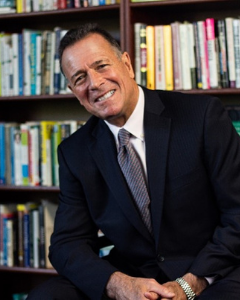
 By Tino Mantella
By Tino Mantella
TLG President & CEO
The delicate balance between profit and purpose has been around since business has existed. Opinions related to how a company utilizes its financial and human resources have varied greatly between different stakeholders, such as the C-Suite and investors, the employee base, and the outside world. You only have to look as far as America’s drug companies or unions to understand the great divides. A dynamic tension between money and mission will always be in play, which in my opinion is not a bad thing. How leaders at all levels of an organization address the potential friction is the core question.
The clip you just watched from the TV series, “The Resident”, brings the point home. Was the CEO egocentric? Yes. Was the doctor naïve? Probably. Did they both have a point? I think so. Sometimes employers and employees miss the financial implications of a decision. In this case, one could ask the question, if the doctor fully got his way would the hospital survive? It’s a timely question with so many hospitals going under. On the other hand, does the CEO seem callous in his words regarding the impact his decisions are having on employees and patients? The answer for the CEO and the doctor could be to make a world-class and financially successful hospital while demonstrating care for every stakeholder, including employees and patients.
The Purpose-Driven Movement
Bravo to the younger generations for asking companies to share what their purpose is beyond their bottom line. Milton Friedman is known to have infamously said that profit is the corporation’s sole responsibility. Today, employees are asking the question: What else is there? And enlightened companies are responding in higher numbers to share their impact beyond the profit. At TLG, it’s a no-brainer. We want to help employees, teams, and companies, unleash their full potential while spreading leadership character around the world. Does that mean that we are not interested in a profit or growing the business? No, we can and are doing both.
Organizations like GoBeyondProfit and Conscious Capitalism have sprouted up over the last few years in response to the purpose-driven movement, and an increasing number of companies are engaging in it. Companies like Whole Foods, a poster child for purpose and profit, are sharing their stories of purpose over profit. Are companies jumping into the movement because they want to avoid the consequences of “The Great Resignation” or the “Quiet Quit”? Perhaps that’s part of it. Yet, the data shows that companies that walk their talk related to balancing money and mission are better performers.
Aligning Purpose and Profit
Eugenio Pace wrote an article for Forbes, entitled “Balancing Profit and Purpose in a High-Growth Company.” In the article, he references the term “Sympatheia,” which he says is a concept from stoic philosophy that means that there’s mutual interdependence between everything. “What is bad for the beehive is also bad for the bee,” he explains to show that we never operate in isolation. Eugenio argues that we need to look at issues as a whole and as part of a larger system.
If a company has a sincere desire to align purpose and profit, one of the most important steps is to seek buy-in from stakeholders on the end goals and then communicate, communicate, and communicate that the desire has teeth to it and is not just a bunch of posters put around the offices.
I am thankful that this is an issue whose time has come.
Tino
Contact Info:
Cell: 678-984-8528

